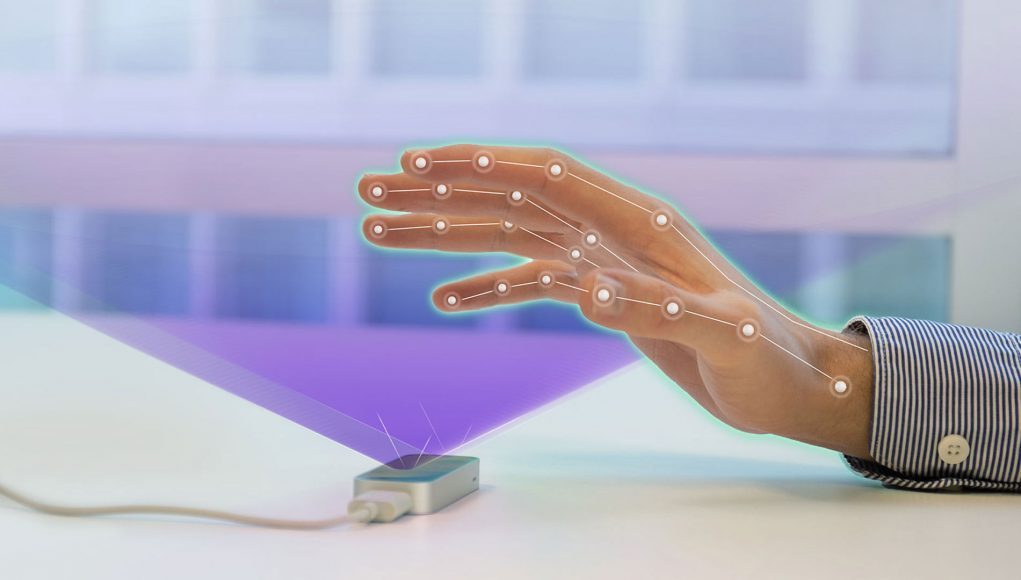Ultraleap, the company behind the Leap Motion hand-tracking controller, has released a Developer Preview of its hand-tracking engine Gemini. By many accounts, Ultraleap’s latest software overhaul dramatically increases the ability of the company’s camera modules to do more precise and stable two-handed interactions.
Gemini is now available in Developer Preview for Windows 10, and is designed to work with all existent Leap Motion controllers as well as Ultraleap’s more recent Stereo IR 170 camera module.
In comparison to Orion (V4), which was released in June 2018, its Gemini (V5) engine is said to offer better smoothness, pose fidelity, and robustness. It also improves hand initialization, and brings “significantly better performance with two-hand interactions,” Ultraleap says.
As seen in the gif below, the solidity of Gemini (V5) is pretty astounding. Not only are both hands more accurately tracked, but occlusion appears to be much less of an issue too, as fingers interlock and move in front of each other with comparative ease.
Ultraleap is set to integrate Gemini into a number of XR headsets, including Varjo VR-3 and XR-3 headsets, and the Qualcomm Snapdragon XR2 5G reference design, which makes use of Ultraleap hardware.
Antony Vitillo of XR publication Skarred Ghost went hands-on with Gemini using his first-generation Leap Motion tracker. To him, the software overhaul represents “the best hands-tracking system I’ve seen until now on all headsets for what concerns the interactions between two hands.”
“What really surprised me is the stability of two hands interactions. For the first time, I’ve been able to make the fingers of my two hands cross and interweave [together], and the tracking kept working reliably.”
Granted, Vitillo’s five year-old Leap Motion does present somewhat of a roadblock due to its comparatively small field of view, however Ultraleap says with its updated IR 170 camera module that “hands will almost certainly be tracked before they come into your sight.”
In practice, Ultraleap hopes its new software will let developers create hand-tracking-focused applications in preparation for the next wave of AR and VR headsets to make more prominent use of the technology. Facebook’s Oculus Quest standalone notably includes hand-tracking for use within its system UI and a handful of applications, however it hasn’t become a standard input method yet.







